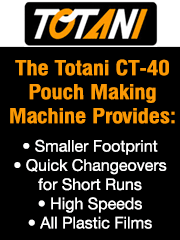Beer and its Labels
- Published: April 01, 2007, By By Corey M. Reardon, AWA Alexander Watson Assoc.
Europe's beer producers have had a hard time in recent years. Except in eastern Europe, sales of beer are declining annually at 1%-1.5% as consumers turn to spirit-based mixed drinks and premium wines. North America, though, is providing a growth engine in the form of a dynamic export market for premium beers. And it is not only the brewers that are benefiting: Beer labeling is the fastest-growing market segment in Europe's converting industry.
Heineken is a major global name, and the opportunity to grow its market with premium beers has led it to innovate with packaging and labeling. Clear-on-clear, self-adhesive film labels, and increasingly, a new generation of glue-applied clear film label stocks, are bringing added cachet to beer bottles. Even direct-printed, bottle-shaped aluminum cans of Heineken are helping build brand value for a consumer very different from Heineken's traditional home market.
What is true for global brands such as Heineken is true for small, local premium brewers. Comparatively small print runs favor self-adhesive labels, making it easy to upgrade esthetics and label content to meet North American consumer requirements.
Beer is brewed across all of Europe, so local converters almost everywhere are benefiting from this “makeover” for the traditional beer bottle. So, of course, are label stock suppliers. But it is not only the self-adhesive laminators who are winning; traditional wet glue manufacturers also have recognized the opportunities to revitalize this market niche. Film producers, for example, are offering end-users a new material choice for “no label look” labels: proprietary PP films for wet glue, patch labeling on glass, metal, HDPE, and PET containers, claimed to offer significant reductions in total applied label cost over self-adhesive.
AWA Alexander Watson Assoc. is an international market research consultant company for the converting and packaging industries.













